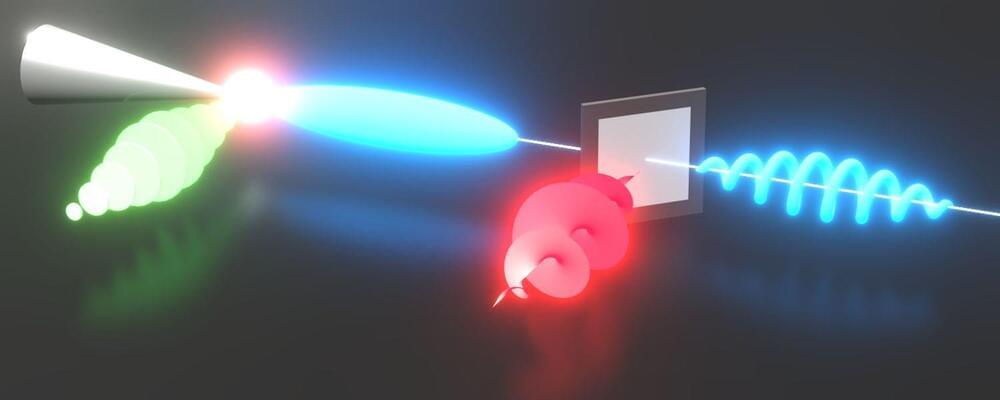Physicists in Konstanz (Germany) have discovered a way to imprint a previously unseen geometrical form of chirality onto electrons. The electrons are shaped into chiral coils of mass and charge. Such engineered elementary particles may open new research avenues in fundamental physics and electron microscopy.
Have you ever placed the palm of your left hand on the back of your right hand, in such a way that all fingers point in the same direction? If you have, then you probably know that your left thumb will not touch its right counterpart. Neither rotations nor translations nor their combinations can turn a left hand into a right hand and vice versa. This feature is called chirality.
Scientists at the University of Konstanz have now succeeded to imprint such a three-dimensional chirality onto the wave function of a single electron. They used laser light to shape the electron’s matter wave into left-handed or right-handed coils of mass and charge. Such engineered elementary particles with chiral geometries other than their intrinsic spin have implications for fundamental physics but may also be useful for a range of applications, such as quantum optics, particle physics or electron microscopy.
